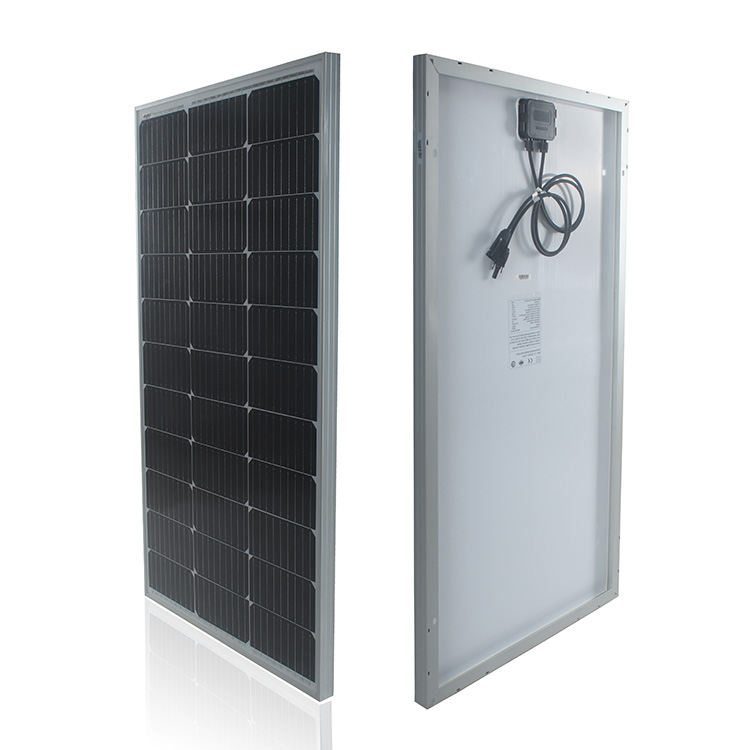- English
- Español
- Português
- русский
- Français
- 日本語
- Deutsch
- tiếng Việt
- Italiano
- Nederlands
- ภาษาไทย
- Polski
- 한국어
- Svenska
- magyar
- Malay
- বাংলা ভাষার
- Dansk
- Suomi
- हिन्दी
- Pilipino
- Türkçe
- Gaeilge
- العربية
- Indonesia
- Norsk
- تمل
- český
- ελληνικά
- український
- Javanese
- فارسی
- தமிழ்
- తెలుగు
- नेपाली
- Burmese
- български
- ລາວ
- Latine
- Қазақша
- Euskal
- Azərbaycan
- Slovenský jazyk
- Македонски
- Lietuvos
- Eesti Keel
- Română
- Slovenski
- मराठी
- Srpski језик
Different types of solar module(2)
2021-12-07
Multicomponent compound(solar module)
Multicomponent compound solar cells(solar module) refer to solar cells that are not made of single element semiconductor materials. There are many kinds of research in various countries, most of which have not been industrialized, mainly including the following: a) cadmium sulfide solar cells b) gallium arsenide solar cells C) copper indium selenium solar cells (New multi-element band gap gradient Cu (in, GA) Se2 thin film solar cells)
Cu (in, GA) Se2 is a solar light absorbing material with excellent performance. It is a semiconductor material with gradient energy band gap (energy level difference between conduction band and valence band). It can expand the range of solar energy absorption spectrum and improve the photoelectric conversion efficiency. Based on it, thin-film solar cells with significantly higher photoelectric conversion efficiency than silicon thin-film solar cells can be designed. The achievable photoelectric conversion rate is 18%. Moreover, this kind of thin-film solar cells do not find the performance degradation effect (SWE) caused by light radiation. Its photoelectric conversion efficiency is about 50 ~ 75% higher than that of commercial thin-film solar panels, which belongs to the highest photoelectric conversion efficiency in the world.
Flexible battery(solar module)
Flexible thin film solar cells(solar module) are distinguished from conventional solar cells.
Conventional solar cells are generally two layers of glass, with EVA material and cell structure in the middle. Such components are heavy, require supports during installation, and are not easy to move.
The flexible thin-film solar cell does not need to use glass back plate and cover plate, and its weight is 80% lighter than that of double-layer glass solar cell module. The flexible cell with PVC back plate and ETFE thin-film cover plate can even be bent arbitrarily, which is convenient to carry. There is no need for special support during installation, which can be conveniently installed on the roof and tent roof.
The disadvantage is that the photoelectric conversion efficiency is lower than that of conventional crystalline silicon modules.

Multicomponent compound solar cells(solar module) refer to solar cells that are not made of single element semiconductor materials. There are many kinds of research in various countries, most of which have not been industrialized, mainly including the following: a) cadmium sulfide solar cells b) gallium arsenide solar cells C) copper indium selenium solar cells (New multi-element band gap gradient Cu (in, GA) Se2 thin film solar cells)
Cu (in, GA) Se2 is a solar light absorbing material with excellent performance. It is a semiconductor material with gradient energy band gap (energy level difference between conduction band and valence band). It can expand the range of solar energy absorption spectrum and improve the photoelectric conversion efficiency. Based on it, thin-film solar cells with significantly higher photoelectric conversion efficiency than silicon thin-film solar cells can be designed. The achievable photoelectric conversion rate is 18%. Moreover, this kind of thin-film solar cells do not find the performance degradation effect (SWE) caused by light radiation. Its photoelectric conversion efficiency is about 50 ~ 75% higher than that of commercial thin-film solar panels, which belongs to the highest photoelectric conversion efficiency in the world.
Flexible battery(solar module)
Flexible thin film solar cells(solar module) are distinguished from conventional solar cells.
Conventional solar cells are generally two layers of glass, with EVA material and cell structure in the middle. Such components are heavy, require supports during installation, and are not easy to move.
The flexible thin-film solar cell does not need to use glass back plate and cover plate, and its weight is 80% lighter than that of double-layer glass solar cell module. The flexible cell with PVC back plate and ETFE thin-film cover plate can even be bent arbitrarily, which is convenient to carry. There is no need for special support during installation, which can be conveniently installed on the roof and tent roof.
The disadvantage is that the photoelectric conversion efficiency is lower than that of conventional crystalline silicon modules.




